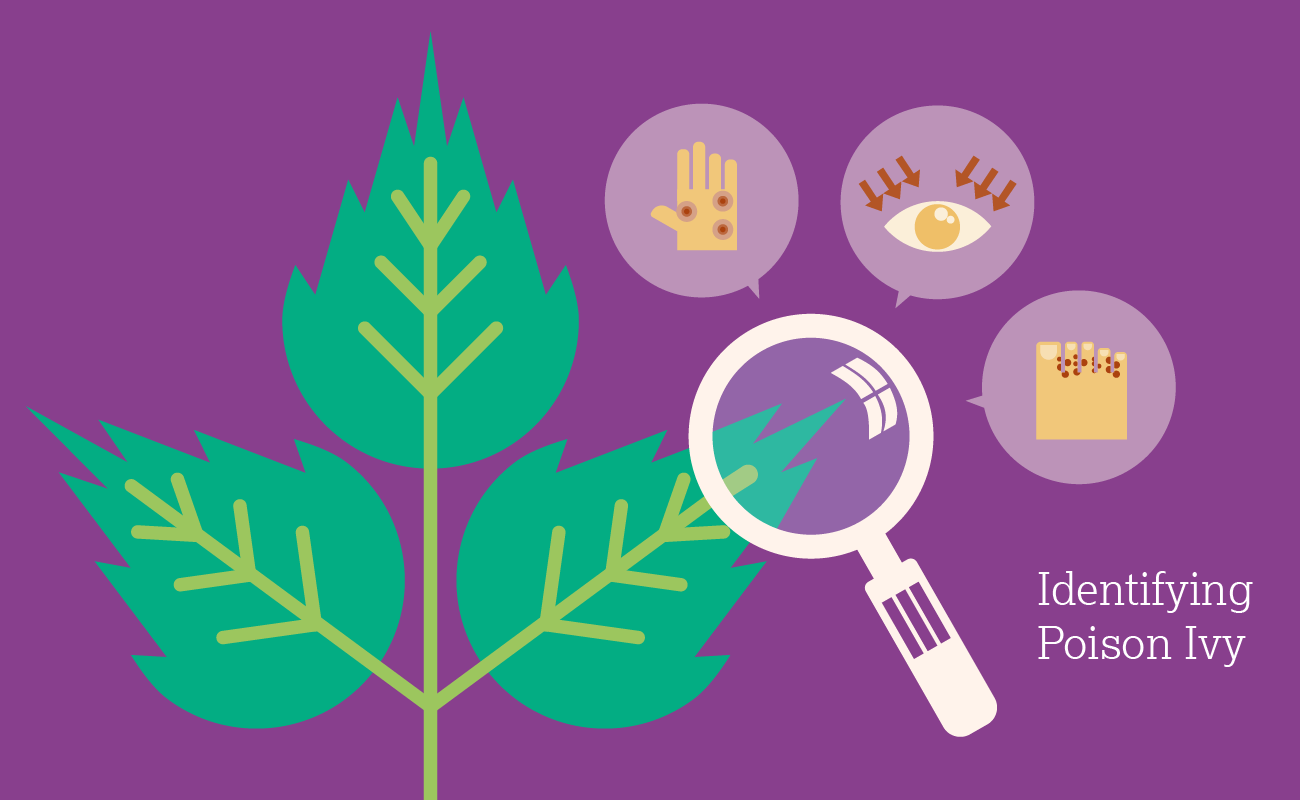Tips to Avoid Poison Ivy (And What to Do if you Can’t)

As a kid, I loved being outside. I helped with a tiny bit of yard work, but one of my favorite activities was throwing a tennis ball against the garage and pretending to be my favorite baseball player.
The driveway at my parents’ house was lined with bushes that were knee-high, and on the other side of those bushes, poison ivy would grow every year. Somehow, a ball would always roll into that patch of poison ivy, or I would walk through it while cleaning up sticks and twigs from the yard. The end result was a week or more of me wanting to continuously scratch my arm, hand, or leg, and my mom doing her best to keep me comfortable.
You probably have a similar story, as poison ivy is one of the most common poisonous plant species, and can be found throughout New York, from right outside your door to up and down your favorite hiking trail.
Avoiding poison ivy can be tricky. You may have heard the saying, “Leaves of three, let it be!”. That’s a warning about the distinctive three leaves that are common with poison ivy and poison oak. When you look a little closer at the three leaves, you may notice that the center leaflet is the largest and has a distinct stem. You may also notice a “shiny” or “glossy” exterior, but that isn’t the case with all forms of poison ivy. Some leaves are smooth, and some have edges or “teeth”.
However, identifying these plants is not an exact science. What you are used to seeing in one place may be completely different from another location, depending on the environment where the poison ivy grows. The color of the leaves may even change with the season, and two of the leaves may fall off near the end of summer.
Here are just some of the places you may find poison ivy:
- Wooded areas, paths, and meadows
- Mixed in with grass
- Locations with good moisture and partial shade
- Beach areas, specifically in low patches on dunes
- Along roads and in ditches
- Along trees, telephone poles, and fences/fence posts
It’s also important to know that direct contact is only one way to develop a rash from poison ivy. Indirect contact (touching a pet’s fur, or even that tennis ball in the yard after it has been through poison ivy) can also be enough to cause problems.
If you’re unable to avoid poison ivy while you are outside, here are a few of the symptoms you may experience:
- A red rash may develop within a few days of contact
- You may see bumps, patches, or blisters
- You may experience swelling or itching at the contact locations
If you experience more severe symptoms from poison ivy, such as trouble breathing or swallowing, severe swelling, or even the development of multiple rashes or blisters, you should visit the emergency room immediately.
In the less severe cases, here are some tips for treatment:
- Rinse the area that came in contact. Use rubbing alcohol, dishwashing soap or detergent, and lots of water. Rinse the area frequently.
- Scrub under your nails with a brush to avoid spreading the poison ivy to another location on your body.
- Use a wet washcloth, calamine lotion, or hydrocortisone cream to reduce itching and blistering. Do not apply these to broken skin, such as open blisters.
It’s worth noting, as well, that while poison ivy is more common, or may have been a more common problem for you in the past, there are other harmful plants that can cause minor problems ranging from rashes or skin irritation, to more hazardous and emergency situations.
Remember these tips when you’re out in the yard, or getting out there to enjoy the Capital Region and beyond, to make sure that poison ivy doesn’t ruin your summer!
 The Daily Dose
The Daily Dose
Comments are closed.